#Marathi book publishers in India
Text
My [work] [...] traces the history of the emergence of the “slum” as a category of stigmatization in colonial Bombay, and locates it in broader histories of colonialism [...] in South Asia. [...] [E]verything counts, not just colonial archives. [...] These archival sources, like the rest of them, do not tell us the past, but mediate a reality for us. What does such an image tell us about how poverty relief changed over time in the subcontinent? In fact, by the late nineteenth century, a debate emerges among colonial officials as to whether the municipality should be doing poor relief at all, and wondering what to do about famine victims. If you took the British colonial archives and maps at face value, you would be missing a great deal. They should be read as documents meant to legitimize a regime. If one is not critical about archives, one falls into the tropes of those who wrote these archives. [...]
Aside from Maharashtra state archives and Bombay municipal records, I also used native language biographies of the city. I found this tiny little book, something akin to a Lonely Planet guide from the time, for people who wanted to visit Bombay.
By the early twentieth century, the city had become a character.
The city -- this abstract idea -- was becoming what you were coming to visit, rather than its people. [...]
---
In the 1860s, there is a Marathi biography of the city which actually deploys the tropes of an older colonial anthropology of Bombay from 1835. [...] I was [...] interested in the tension between on the one hand those colonial and native elites who wanted to turn the city into a place for revenue collection and commerce, and on the other the large majority of workers and migrants that shaped Bombay differently.
---
The question of tropes around urban development is always fodder in my mind, as I ask myself why certain representations of space become both so powerful and so contested in colonial India. The concern with the city in India is a relatively new one, as Gyan Prakash argued in a 2002 article on the “urban turn” in South Asian social sciences.
The East India Company and the British Crown settled India primarily as an agrarian colony, with people stationed all across India to collect revenue. For long it was thought India was de-urbanized and peasantized, so the urban perspective was in the background.
Tropes surrounding the tensions between the urban and the rural are at the heart of modernism broadly, and at the heart of India’s nationalist project.
What we call “city space” is always associated with modernity, whereas all the rest is traditional.
If you showed a map of Bombay to an urban planner, they would tell you certain parts of Bombay are more urban than others, and such qualifications would map onto caste separation. Low-caste areas would be seen as “not-fully-urban”, not city-like. [...]
[T]he racialization of labor functions at the same time as the racialization of space. The internally-differentiated city comes to index a specific racialization of labor, in order to make it invisible.
---
Words of Sheetal Chhabria. As told to Ayan Meer. A transcript published as “The Archive Box #3: Building Colonial Capitalism in Bombay.” Global Urban History. 11 December 2020. [Some paragraph breaks and contractions added by me.]
57 notes
·
View notes
Text
Exploring the Lively World of Indian Authors
India, a land of varied countries, languages, and traditions, has a wealthy literary heritage that dates back centuries. Indian writers have created substantial contributions to earth literature, capturing the fact of the nation's ethos and showing its multifaceted society through their works. From basic epics like the Mahabharata and the Ramayana to modern books grappling with modern-day complexities, Indian literature offers a huge spectral range of styles and narratives.
Diverse Voices, Varied Stories
Among the striking features of Indian literature is their diversity. India is home to a variety of languages and countries, each using its possess literary tradition. From the musical sentiments of Tamil Sangam poetry to the intricate storytelling of Bengali literature, from the mystical Sufi poetry of Urdu to the philosophical musings of Sanskrit texts, Indian literature encompasses a kaleidoscope of sounds and perspectives.
Common Performs and Amazing Stories
Indian literature provides of amazing classics which have transcended boundaries and generations. The epics, Mahabharata and Ramayana, variety the cornerstone of Indian storytelling, embodying moral dilemmas, heroic valor, and elaborate familial relationships. The philosophical ideas of the Bhagavad Gita, embedded within the Mahabharata, continue to stimulate visitors worldwide.
In the sphere of modern literature, Indian writers have garnered global praise for his or her poignant stories and evocative storytelling. Salman Rushdie's "Midnight's Children" and Arundhati Roy's "The God of Small Things" are celebrated types of contemporary Indian literature, exploring themes of personality, politics, and social upheaval.
Emerging Sounds and New Perspectives
The landscape of Indian literature is continually changing, with emerging authors getting new views and narratives to the forefront. Authors like Aravind Adiga, whose introduction story "The White Tiger" gained the Person Booker Prize, and Jhumpa Lahiri, acclaimed on her behalf insightful portrayals of the immigrant experience, have received common acceptance for his or her compelling storytelling.
Furthermore, Indian literature is seeing a resurrection in local sounds, with authors like Perumal Murugan, Chandrakanta, and Vivek Shanbhag gaining prominence for his or her performs in regional languages like Tamil, Kannada, and Marathi, respectively. These experts enrich the literary tapestry of India by giving ideas to the national subtleties and societal character of their particular regions.
Difficulties and Options
Despite their wealthy heritage and strong skill pool, Indian literature faces a few issues, including linguistic barriers, restricted use of publishing programs, and the dominance of English-language publishing. Several regional languages struggle for recognition and dissemination, blocking the visibility of indigenous literary traditions.
But, the digital age has opened up new paths for Indian authors, permitting self-publishing, online tools, and international distribution channels. Social media marketing and digital neighborhoods offer authors with opportunities to connect with viewers global, fostering a far more inclusive and varied fictional landscape.
Celebrating Indian Literature
Once we enjoy the vibrant tapestry of Indian literature, it is vital to acknowledge the position of Indian experts in surrounding the social and intellectual discourse of the nation. Their reports resonate with readers across borders, transcending linguistic and ethnic limits to supply glimpses into the human experience in all its complexity.
Whether delving in to historical mythologies or grappling with contemporary issues, Indian authors continue steadily to stimulate, provoke, and concern readers using their strong narratives and profound insights. Even as we navigate the ever-changing currents of the fictional world, Indian literature stays a beacon of imagination, variety, and resilience, reaffirming their rightful place on the international pointIndia, a area of diverse countries, languages, and traditions, has an abundant literary heritage that appointments back centuries. Indian experts have produced substantial contributions to world literature, recording the fact of the nation's ethos and sending its multifaceted culture through their works. From traditional epics such as the Mahabharata and the Ramayana to modern novels grappling with modern-day difficulties, Indian literature supplies a substantial spectral range of styles and narratives. Indian Authors
Varied Sounds, Diverse Experiences
One of many impressive top features of Indian literature is its diversity. India is house to a multitude of languages and countries, each having its own fictional tradition. From the musical sentiments of Tamil Sangam poetry to the delicate storytelling of Bengali literature, from the mystical Sufi poetry of Urdu to the philosophical musings of Sanskrit texts, Indian literature encompasses a kaleidoscope of sounds and perspectives.
Common Works and Timeless Reports
Indian literature delivers of classic classics that have transcended edges and generations. The epics, Mahabharata and Ramayana, kind the cornerstone of Indian storytelling, embodying moral dilemmas, heroic valor, and elaborate familial relationships. The philosophical insights of the Bhagavad Gita, embedded within the Mahabharata, continue to stimulate visitors worldwide.
In the kingdom of modern literature, Indian writers have garnered international acclaim for his or her moving narratives and evocative storytelling. Salman Rushdie's "Midnight's Children" and Arundhati Roy's "The Lord of Little Things" are celebrated samples of modern Indian literature, discovering styles of identity, politics, and social upheaval.
Emerging Sounds and New Views
The landscape of Indian literature is continually developing, with emerging authors providing new views and narratives to the forefront. Writers like Aravind Adiga, whose debut book "The White Tiger" won the Man Booker Treasure, and Jhumpa Lahiri, acclaimed for her topical portrayals of the immigrant knowledge, have gained popular acceptance because of their convincing storytelling.
Furthermore, Indian literature is observing a revival in regional comments, with authors like Perumal Murugan, Chandrakanta, and Vivek Shanbhag increasing prominence due to their works in local languages like Tamil, Kannada, and Marathi, respectively. These authors enrich the fictional tapestry of India by offering ideas into the ethnic nuances and societal dynamics of their particular regions.
Difficulties and Options
Despite its wealthy heritage and strong talent share, Indian literature encounters many problems, including linguistic barriers, limited use of publishing tools, and the dominance of English-language publishing. Several regional languages struggle for acceptance and dissemination, blocking the presence of indigenous fictional traditions.
However, the digital era has opened up new ways for Indian experts, permitting self-publishing, on line systems, and worldwide distribution channels. Social networking and digital towns give experts with opportunities to connect with viewers worldwide, fostering an even more inclusive and diverse literary landscape.
Celebrating Indian Literature
Once we observe the lively tapestry of Indian literature, it is essential to recognize the role of Indian writers in surrounding the cultural and intellectual discourse of the nation. Their reports resonate with viewers across edges, transcending linguistic and social limits to supply glimpses to the human experience in every its complexity.
Whether delving into ancient mythologies or grappling with contemporary issues, Indian writers continue to stimulate, provoke, and challenge viewers using their powerful narratives and profound insights. Even as we steer the ever-changing currents of the literary world, Indian literature stays a beacon of imagination, diversity, and resilience, reaffirming their rightful put on the global stage
0 notes
Text
Language House

Language House is a leading publishing house in the country specialized in preparing teaching materials for Hindi, Sanskrit and Regional languages, a renowned name in the realm of language education, has unveiled its latest initiative aimed at revolutionizing language learning methods. The publishing house, well-known for its dedication promoting linguistic proficiency through innovative resources, has introduced a groundbreaking series designed to cater to diverse language learners worldwide.
Titled “Gulmohar Hindi, Amoli Hindi and Pratham Sanskrit”��this pioneering series offers a comprehensive approach to language acquisition, blending cutting-edge technology with proven pedagogical techniques. With a commitment to inclusivity and accessibility, Language House aims to empower learners to embark on their linguistic journey with confidence and enthusiasm.
The Language House publish text books, Grammar books, Story books and cursive writing books in more than 12 Indian languages. They also specialized in Gujrati, Marathi, Aasamese, Punjabi, Urdu & Arabic.
Our books published in different regional languages are getting popularity all over India. The content and structure of our books are carefully designed in form and expression with the aim to create innovative study material in making education a life-long learning process.
In addition to its technological innovations, Language House Publishing House has prioritized cultural authenticity and linguistic diversity. Learners can explore a rich tapestry of languages, dialects, and cultural nuances, fostering a deeper appreciation for global communication and intercultural exchange.
Our goal is to inspire a lifelong love of language learning by offering dynamic, immersive experiences that resonate with learners of all ages and backgrounds.
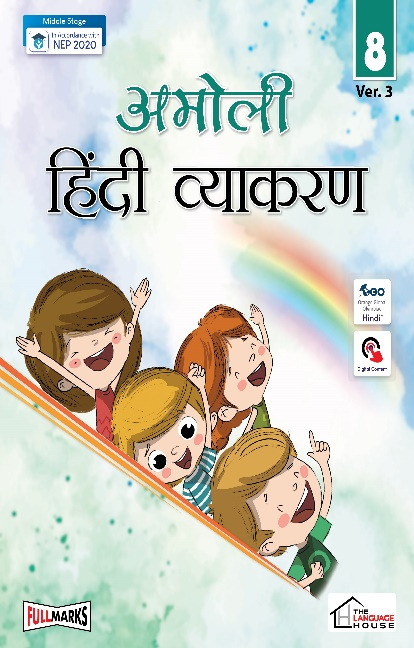
The launch of the Hindi and Sanskrit series represents a significant milestone for Language House Publishing House, reaffirming its position as a leading authority in the field of language education. As the world becomes increasingly interconnected, the demand for effective language learning resources continues to grow, and Language House Publishing House remains at the forefront of this burgeoning industry. Visit www.languagehouse.in for more details
0 notes
Text
The Goa Book Fair (4th January – 8th January) 2024

Goa, the sun-kissed coastal paradise of India, renowned for its sandy shores, vibrant nightlife, and laid-back lifestyle.Building on the success of last year’s event, which took place from February 9–13, 2023, this year’s book fair is expected to draw an even larger crowd of enthusiastic book sellers and eager book buyers.
Leonard J. Fernandes from Publishing Next expressed optimism, stating, “We anticipate the return of schools and colleges to the book fair this year. To further enhance participation, we are organising additional events for both children and adults. The book fair caters not only to the Goa market but also attracts book buyers from neighbouring regions like Sawantwadi, Belgaum, and Karwar. Interest spans across genres and languages, including Konkani, Marathi, Hindi, Kannada, and English.....Read more
0 notes
Text
Trust: Love is Worship, Not Lust! by Shivaram Mahajan

About the Book
TRUST is the romantic love story. Shiv n Vijaya fell in love on the very first day of the college. It's love at first sight or glance. As it has traditional background of the Indian ethos their typical love was not acceptable to parents n their relatives. Despite strong opposition from home n society they fought with patience and restraint with their own parents and society. Ultimately their parents yielded n accepted their genuine love for each other. After prolonged discussion n argument the battle is settled in amicably.
Along with the theme of love the author has thrown light on the issues like Child marriage, liberty to everyone to think n act independently , Indian farmers poor life…n other social issues.
The theme of the novel is genuine, true love n trust wins ultimately. SHIV AND VIJU are proven example. Flirt n Love are clearly distinguish here.
The book TRUST makes you smile,makes you cry, makes you stunned and makes you think n act accordingly your conscience. The novel is full of emotions and conflicts occurred thereon! In short TRUST IS THE LOVE STORY OF EVERY ONE'S LIFE. Shiv and Viju are mere representative of the young generation.
About the Author
Shivaram Mahajan has been a rising writer of genre fiction in Marathi Hindi and English languages. His two books are already published in Marathi namely
1) TE PAKKE PREMVEER
2) HUNDA BALI.
Both are fiction.
TRUST: LOVE IS WORSHIP NOT LUST is his third book in Indian English.
SHIVARAM MAHAJAN generally focuses on the theme of social and family surroundings of the typical Indian culture and tradition. He has raised his cudgel against the outdated Customs and traditions of Indian life. He desires to maintain a proper balance between modernity and traditional values. His books are entertaining as well as educative. He is not a preacher nor propagandist of the particular way of life. His focus is on individual freedom and liberty in our day-to-day life.
Shivaram Mahajan had been retired after 38-plus years of long innings in the field of college education. He had been the professor of English in the PRINCIPAL of the Arts, commerce, and Science college at the Jalgaon District Maharashtra. He had been a Senate member of the North Maharashtra University Jalgaon Maharashtra India.
Shop Now on Amazon, Flipkart and BlueroseOne
0 notes
Text
Marathi Sahitya: A rich and vibrant tradition
Marathi sahitya, or Marathi literature, is a rich and vibrant tradition that dates back centuries. From the early epics and puranas to the modern novels and short stories, Marathi literature has something to offer everyone.
One of the most important aspects of Marathi sahitya is its diversity. There are works of literature in Marathi that cover a wide range of topics, from love and loss to social commentary and political satire. This diversity is reflected in the many different genres of Marathi literature, including poetry, fiction, non-fiction, and drama.
Another important aspect of Marathi sahitya is its history. Marathi literature has evolved over time, and each era has produced its own unique literary masterpieces. The early epics and puranas, for example, are full of mythological stories and religious teachings. The 19th century saw the rise of Marathi novels, which often explored social and political issues. And the 20th century saw the emergence of Marathi short stories, which are known for their sharp insights into human nature.
Today, Marathi sahitya is still going strong. There are many new and exciting works of Marathi literature being published every year. And Marathi literature is not just limited to India anymore. It is also read and enjoyed by people all over the world.
If you are interested in learning more about Marathi sahitya, there are many resources available. You can find books, articles, and websites that provide information about Marathi literature, its history, and its major authors. You can also attend literary events and festivals that celebrate Marathi sahitya.
I encourage you to explore the world of Marathi sahitya. It is a rich and vibrant tradition that has something to offer everyone.
1 note
·
View note
Text
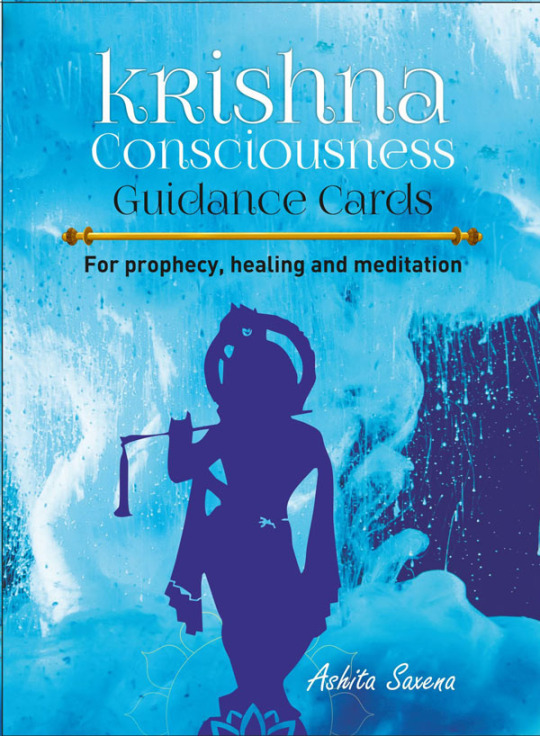
Indus Source is a publisher of nonfiction books in English, Marathi, and Hindi, with a focus on spirituality. Some well-known works are Sai Baba and Krishna. The guide cards show Krishna's life through hand-painted images, each depicting one of his stories/leelas from the book with a lesson for us.
Address:
No 21, Wadala Udyog Bhavan, Naigaon Cross Road, Wadala, Mumbai 400031
INDIA
Phone no. :
99209 76875
website
https://www.indussource.com/spirituality/
0 notes
Text
Dr. Satilal Patil: TEDx Speaker, Adventurer, Scientist, Writer, Entrepreneur, Motivational Speaker, Business coach.

An experienced businessman who has become an inspiration to many as an entrepreneur, scientist, author and adventurer.
Dr Patil believes that “To be successful, it is important to see challenges to embrace rather than an impenetrable barrier. In his 23 years journey of working experiences as a Training, research, product development, marketing and sales, consultancy in organic agriculture, biopesticides, biofertilizers, IPM he has worked with across 23 countries and has touched over 1 million people through his workshops, training and books.
Scientist
Dr. Satilal Patil, has completed doctorate in environmental sciences from ‘Savitribai Phule Pune University’. During his PhD, he worked on entomopathogenic fungal biopesticide technology which is shear necessary for replacing chemical pesticides from an agriculture. Since 1998, he is working in the field of organic agricultural inputs, environment and sustainable technologies. During this 23 years, he did R&D and developed various products and technologies in organic inputs, integrated pest management, biopesticides, biofertilizers, plant growth regulators and promoters, insect pheromones and attractants, adjuvants, organic veterinary protectants, waste management products and speciality chemicals.
Entrepreneur
For a decade, he worked for various organisations like Ajay Biotech India Ltd, MITCON Biotechnology Centre as In charge, Sudarshan Chemical Industries Ltd as All India Manager for biopesticides and Vidya Pratisthan Biotechnology (VSBT) as Scientist Organic Farming. After that he decided to taste the entrepreneurial feat and laid foundation of ‘Green Vision Life Sciences Pvt Ltd’. At Green Vision he worked on manufacturing, research and trainings in the field of agriculture, veterinary products, environment and speciality chemicals. ‘Green Vision’ focused on development of import substitutes.
Author
Dr. Patil’s first book entitled ‘Entomopathogenic fungi based biopesticides technology’ was published by LAP Lambert publication, Germany in 2010. But real author came in light after publication of his bestseller book ‘Dreamers and Doers’. This book is based on his adventure of 20000 km motorcycle expedition from Pune (India)- Singapore- Pune. This book became bestseller in its first year itself. The third edition of this book is published during 94
Newspaper Columnist
Dr. Satilal Patil’s role as newspaper columnist came in existence after publication of the popular Marathi article series named ‘Mazi Mushafiri’ (My journey), started publishes in ‘Sakal Agrowon’ newspaper. This weekly article series became popular among the readers. Apart from this, his articles were published in Daily Sakal, Tarun Bharat, Deshonnati and Janshakti. The article topics were dedicated to subjects like environment, agriculture, science and adventure.
Adventurer
Adventure is in Dr. Satilal Patil’s blood, but his adventure journey started with motorcycle tour to Leh, Ladakh in 2010. Before that experienced various trekking and hiking activities on historical forts across the Sahyadri maintains. Apart from hiking and motorcycling, he did bicycle expeditions as well. The major motorcycle expeditions completed by Dr Patil covers Pune to Leh, Ladakh (2000 km), Pune Hampi-Pune (), Pune Singapore Pune (20000 km) rides.
Apart from motorcycle rides, he is fond of cycling. His cycle rides includes Pune to Goa (450km), Pune to Kanyakumari (3400 Km), Cambodia to Thailand (750 Km) and Nasik to Statue of Unity (500 Km). The Jammu Kashmir to Kanyakumari bicycle expedition fetched three national records and got registered in India Book of Records. Apart from this, his articles were published in Daily Sakal, Tarun Bharat, Deshonnati and Janshakti. The article topics were dedicated to subjects like environment, agriculture, science and adventure.
#Biopesticideexpert#Biofertilizerexpert#Organicfarmingexpert#ScientistOrganicagriculture#Chemicalfreefarmingexpert#Biocontrolexpert#TEDxSpeakerinpune#Adventurerinpune
0 notes
Text
Get Noticed with Dainik Bhaskar Newspaper Ad: Effective Advertising Solution
Wondering why you should book a Dainik Bhaskar newspaper ad? We will tell you in detail right here!
To begin with, Dainik Bhaskar is the most sold newspaper in all of India! However, the newspaper as we know it today had a very different beginning. Back in the year 1948, two distinct newspapers, namely Subah Savere and Good Morning India were launched, in Bhopal and Gwalior, respectively. Both these newspapers then came together in the year 1957, combining to form a new news brand called Bhaskar Samachar. In the year 1958, the newspaper was rebranded once again, this time to Dainik Bhaskar, and this is the name that has continued ever since.

Having become one of the most recognisable names in Hindi language news journalism, Dainik Bhaskar is the preferred news source for millions of families across not just the mainly Hindi-speaking states in northern India, but in various other parts of the country as well. As of today, Dainik Bhaskar is not just the highest selling newspaper in India, but also the third most sold newspaper in the whole world!
The newspaper is owned and published by the Dainik Bhaskar Group, and this media brand’s publications are widely circulated across 12 states in India, being published in Hindi, Gujarati and Marathi.
On any given day, it is estimated that Dainik Bhaskar has more than 4.5 million copies of the newspaper in circulation across vast parts of the Hindi Belt states, being read by a large, loyal and engaged reader base that is estimated to be well over 21.2 million people.
The newspaper delivers the latest news stories to its readers in a crisp and easy-to-read format, making it a dependable and comprehensive source of all the latest local, regional, national and international news. In addition, Dainik Bhaskar also brings to its readers a range of content spanning diverse topics of interest. These topics include business, sports, lifestyle, politics, technology, Bollywood, cricket, women’s affairs, astrology, careers, as well as a dedicated section for opinion pieces.
Given the sheer diversity of its content as well as the wideness of its reach, Dainik Bhaskar is a newspaper that has something for everyone. It is clearly a newspaper that can get you noticed by a wider audience.
In India, it is well known that newspapers are widely regarded as authentic and reliable sources of news and a host of other information. For this reason, booking Dainik Bhaskar classified ads is a great way to reach out to the people you want to get your message across to.
releaseMyAd is here to help you widen your visibility among your target audience, wherever they may be located, through classified ads in Dainik Bhaskar. Being the largest self-service online ad booking platform in India, releaseMyAd has more than a decade of experience in the advertising industry. Offering you an ad booking experience like no other, releaseMyAd makes booking your Dainik Bhaskar advertisements seamless and hassle-free!
#dainik bhaskar ad#dainik bhaskar advertisement#dainik bhaskar ad booking#book ad in dainik bhaskar#advertisement in dainik bhaskar#Dainik Bhaskar ads#advertise on Dainik Bhaskar newspaper#DainikBhaskar newspaper advertisement
0 notes
Text
Balasaheb Shinde English Grammar PDF
Balasaheb shinde english grammar pdf: Balasaheb Shinde’s “Sampoorna Engreji Vyakaran” is a landmark work that has greatly influenced the study of English grammar in the Marathi-speaking region of India. Published in 1927, the book quickly gained popularity among students and educators alike due to its accessibility and ease of understanding.
The book provides a comprehensive guide to English…

View On WordPress
0 notes
Text
35000+ Jambo Mega Police Bharati Gatak Vargikrut Sakhol Vishleshan / The Smart Book
35000+ Jambo Mega Police Bharati Gatak Vargikrut Sakhol Vishleshan / The Smart Book
Price: (as of – Details)
ASIN : B09R81V64C Publisher : Bharati Publication; First Edition (25 January 2022) Language : Marathi Paperback : 1200 pages Reading age : 16 years and up Item Weight : 670 g Dimensions : 27.8 x 20.7 x 3.7 cm Country of Origin : India
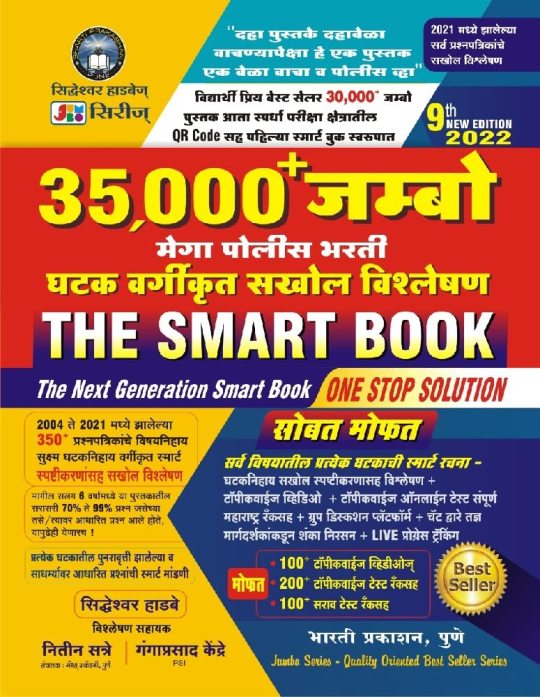
View On WordPress
0 notes
Text
Pregnancy Notes Before, During and After (Marathi)
Pregnancy Notes Before, During and After (Marathi)
Price: (as of – Details)
Publisher : Ameya Inspiring Books (1 January 2018) Language : Marathi ISBN-10 : 9350800977 ISBN-13 : 978-9350800973 Item Weight : 140 g Dimensions : 20 x 14 x 4 cm Country of Origin : India

View On WordPress
0 notes
Text
Dainik Bhaskar, the Hindi language newspaper was first published in Bhopal, Madhya Pradesh, India in 1956. Owned by the Dainik Bhaskar group (known to be the largest print media group), it has the third-highest circulation in India. Today, it has thirty-seven editions and makes its presence in fourteen states in India.
Dainik Bhaskar is available in four different languages: Hindi, Marathi, Gujrati, and English. The Group also has made its entry into the Radio and digital media with seventeen radio stations and four websites. However, the digital venture did not make its presence as good on the lines of its Newspaper business. Booking Newspaper Classified ads in Dainik Bhaskar can be done through Obituryads. We place ads for all the leading newspapers in India.
0 notes
Text

English is a global language and has a significant impact on students in India.
The Indian Constitution considers it as one of the languages that have to be used by all state institutions, including universities, colleges, and schools.
In fact, English is taught as a compulsory subject in every school. You cannot deny but agree with the fact that the English language leads to the improvement of overall performance in school.
But what about its importance for students in building careers? Is it really necessary to learn English or why is English important for students in India?
In order to understand how much importance the English language plays for Indian students, we have listed down the top 10 reasons why learning English is important for adults and students alike.
English is an integral part of the Indian Education System.
English is an important part of the education system in India. There are more than 1,000 Indian languages and dialects, but only 5% of Indians speak them as their mother tongue. English is considered to be one of the five national languages along with Hindi, Bengali, Marathi, and Tamil.
English is also taught as a compulsory subject in all schools across India, including private ones, and is also used extensively by students preparing for competitive exams such as the IIT-JEE, NEET, and AIIMS Mains or other government exams. And this doesn’t mean that students should know English as proof of their caliber. But they should know it as a medium of communication.
English has been a part of the curriculum since the beginning of our schooling in India, especially at the primary level.
In fact, it is said that English is one of the most important languages that students should learn as they are expected to communicate with other countries and they will also be exposed to international culture through it.
English is the language of the internet
English is the language of the internet. It has been for a long time and will continue in future.
The reason English is so successful on the internet is that it’s easy to read, it’s easy to write, and it’s easy to search. You can get your point across in English without having to learn a lot of new vocabulary or grammar rules.
Another reason English is so successful on the internet is that it’s an international language. All kinds of people can use it, including people who don’t speak any other language at all. If you want your message to reach as many people as possible, then you should use English as the ultimate language.
English is the language of science
It may come as a surprise to some, but English is the language of science. It’s not just that most scientific research is written in English and published in journals or books. It’s also true that scientific papers are judged on their correctness, and many journals require that a paper be written in English.
English can help you to pursue your education in any foreign countries
Do you wish to pursue your education in a foreign country?
If yes, then you should know that English is a very important part of your life. English is a universal language that can be related to anyone, anywhere in the world. It’s a useful tool for any student and it has become more so in recent years due to globalization and technology. English is a language spoken by more than 450 million people worldwide, including in the United States, Canada, and the United Kingdom, and highly important for anyone who wants to pursue further education in these countries.
English can open multiple doors of career opportunities
English is a very versatile language that can be used in many different ways. Students who learn English can use it to communicate with people around the world, which will help them grow their career opportunities in different fields such as business, trade, and tourism.
English skills are needed in many different fields, from business and education to arts and sciences. In fact, nearly every profession requires some level of proficiency in the English language. It is highly important that each student understands and speaks at least basic English.
English can make you learn about the culture of different countries.
English can help you learn about the culture of different countries. The Internet has made it easy to find out about the culture of different countries and to read about it. You can also learn about their customs and traditions without ever stepping outside your own country.
English is a global language, so it is easier to travel around the world than ever before. It is also easier to communicate with people in other countries because they can speak English. You can confidently walk in the streets of any oversea country without the fear of any language barrier and learn more about their culture.
English is the language of media
Media is an important part of our lives. It helps us keep up with what’s happening in the world, whether it’s politics, sports or entertainment. Media also plays an important role in society by helping us understand other cultures and beliefs. With its global reach, English has become an important tool for creating and disseminating information in many fields.
English can help you build connections with the best people around the world.
English is a great subject for networking because it is a universal language. There are many ways to network in English and use it to your advantage.
Like,
1) You can use English in your job search by using websites such as LinkedIn, Facebook, and Twitter. This can help you to enhance your network and build connections with people from different industries.
2) English can help you to enhance your network and build connections with people from different countries. You might even meet new friends who share common interests with you, which could lead to long-term relationships or business partnerships.
As a student, there is a great scope for learning and exchanging ideas with the world around you. By taking advantage of this networking, you can easily come across information that you might not know otherwise.
English can help you stand out.
English is the lingua franca of the world, and it’s also a very useful tool for making yourself stand out from the crowd. English is the language we use to communicate with each other. It’s not just a means of communication, it’s part of our identity as human beings. We see this in everyday life: when someone speaks English, they’re reinforcing their sense of belonging and their ability to interact with other human beings. Whether we like it or not, somewhere they stand out of the crowd.
Learning English can help you get access to online courses.
In order to gain access to online courses and other resources that are only available in English, it is important to be able to read, write and speak English well. Most of the courses are available in English only.
Now that you know that English is important for students in India, the question is How to improve your English?
I’ve realized that there are two things you need to know in order to learn English well: how to speak, and how to listen. If you want to be an English speaker, then you need to focus on speaking and listening skills first. The more you practice speaking and listening effectively, the better your pronunciation will become; this will help with reading and writing as well.
You can’t just study grammar rules like some sort of magic wand but instead, focus on improving your listening skills first by learning about what people say around you every day – at home or at work, at school or in the streets – by simply paying attention! And then participating in the conversation as much as possible.
If you are a student, you can also practice English with Engvarta Experts. The English Experts will guide you through your mistakes and help you speak in English confidently and without any mistakes.
Check this out If you are looking for more reasons of Why English Learning is Important for Students.
I hope you enjoyed reading the blog!
Don’t forget to download the EngVarta app to start your English practice.
Source: EngVarta Blog
0 notes
Text
VanavlyachyaGappa Marathi Edition by Dr. Arati Suryawanshi
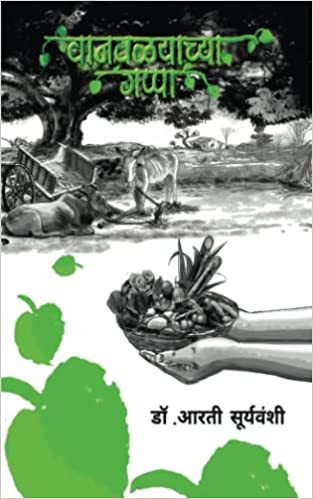
About the Book
" Wanavla", the word in marathi meaning; "Offering a part of the produce from farm or home made delicacies to our friends, neighbours or relatives." Author Dr. Arati. has spent her childhood in a small town, "Kalwan", District Nasik, Maharashtra, India. Where it was a very common custom to offer a Wanavla to neighbours and mostly people who used to go with 'Wanavla' never came back empty-handed. They also were offered something from their neighbours farms or homemade delicacies as well. And in this process neighbours/relatives/friends were offered a cup of tea/coffee/fresh lemon juice and chit chatting over that used to be a common phenomena of the town like Kalwan. Surely many readers too, must be knowing what Wanavla is? In that Chit Chatting every important matter has been discussed, from children's education to their marriages, produce from their farms to prices in the market, politics, farming, human life every possible topic has been discussed. Ladies from the homes, if they go to offer Wanavla to their neighbours then, it has been a very important, relaxing time to be spent for them. ""Gappa'' is a word taken here metaphorically. All the incidents happened in the town where Wanavla is to be offered and offered back, so author Dr. Arati wants to call it ""Wanavlyachya Gappa"". In this book, you will find beautiful incidents/anecdotes from her childhood and also from the places where she travelled with her family. Wherever her father transferred in Maharashtra, She has selected beautiful Anecdotes to share with you. All of them are beautiful and literally take you there while reading those stories. Also how her family used to receive Wanavla from various families from the town Kalwan. Every Anecdote has a different Title to it.
About the author
Dr. Arati Suryawanshi, Before Marriage, her name was Arati Vaze, Father's name was Shri. Yashwantrao Vaze, When her father \ was working with Brooke Bond Company, His transfer was in the small Village, Kalwan, Dist. Nashik. In that town Dr. Arati and her family had to spend at least eight years. During that time, Her Grand Mother, Saraswatibai Vaze(Nagpur), used to be with them. When guests/relatives used to visit their house in Kalwan, they used to love the serene beauty of it. And family members take their guests to visit Shri. Saptashrungi Gad was quite often. After 8th grade, Arati's father transferred to Nashik District. Then in Jalgaon, and Later Dr. Arati completed her Education in Clinical Psychology in University of Pune. After completing her post graduation in Clinical Psychology, Dr. Arati started her own counselling centre in Jalgaon, and later in Nashik. Both the places, Jalgaon and Nashik, it was the first ever therapy based clinic commercially opened by Dr. Arati. Before and After her marriage She took her career ahead in Training and Development. Now it's been 27 years she is in the same career. She always wanted to have the most important degree in academics and that is , Doctorate in Philosophy in her own beloved subject, "Emotional Intelligence". And she completed her PhD. in Emotional Intelligence and Human Resource Management, with the grants awarded by Globally recognised NGO, 6seconds. Today she is working as a Emotional Intelligence Consultant from her own office at Fort, Mumbai. She has participated in various conferences and submitted her papers, at Mauritius, California, etc. Her papers are also published in many International Journals.
During Covid, her consultancy, had taken an initiative "Covid - 19 - Action", She has conducted online seminars for various communities, approx. not less than 5000 people attended it. Her remarkable work during Covid, awarded her with many awards, as Samajbhushan puraskar, Mental health sanjivani award, Felicitated by Indian Medical Association. She has already written one book, "The Mindful Heart", Which is available on Smash Words.
Shop now from Amazon, Flipkart, and BlueRose Online.
0 notes
Text
5 Must Listen Audiobooks For Everyone
In life, there are things you could do, things you should do, and things you must do. These same categories apply to the choice of book you listen next. You could listen any number of books, for reasons ranging from guilty pleasure to the fact that your book club meets in two days.
Below is the list of 5 Must Listen Audiobooks for Everyone. Everyone should listen to these books published by HarperCollins India.
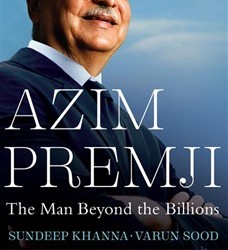
1. Azim Premji by Sundeep Khanna | Varun Sood
Azim Premji: The Man Beyond the Billions, the first authoritative biography of the icon, shows how Premji is a philanthropist at heart and a businessman by choice – a man who wanted to give away his billions but realized early enough that he would first have to earn them. It peels the layers off Premji’s life while chronicling his professional and charitable work in the context of his many strengths and shortcomings.
Buy Now!
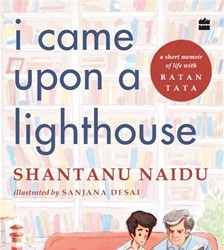
2. I Came Upon a Lighthouse by Shantanu Naidu
In 2014, Shantanu Naidu, an automobile design engineer in his early twenties, developed an innovation to save the local strays from being run over by speeding cars. Ratan Tata, himself known for his compassion for stray dogs, took note. Impressed, he not only decided to invest in the venture, but over the years became a mentor, boss and an unexpectedly dear friend to Shantanu.
I Came Upon a Lighthouse is an honest, light-hearted telling of this uncommon bond between a millennial and an octogenarian that gives glimpses of a beloved Indian icon in a warm light.
Buy Now!

3. Yes Man by Pavan C. Lall
Yes Man is the story of Rana Kapoor, and his Icarus-like flight that eventually led to the Yes Bank crisis. From starting out as a junior employee at Bank of America to leading a bank worth billions, Kapoor’s rise and fall is a case study in ambition, greed and deceit. In this hard-hitting book, Pavan C. Lall details not only Rana Kapoor’s journey, but also asks tough questions about the banking system, its regulators and even the business environment that led to a point of no return for Yes Bank.
Buy Now!

4. A Patchwork Quilt by Sai Paranjpye
Sai started her career at All India Radio, later graduating from the National School of Drama and making her way into theatre, television, documentaries and movies, working with some of the most highly regarded names of the Hindi film world. She met with success in the world of books too, her Marathi translation of Naseeruddin Shah’s memoir winning her the Sahitya Akademi award in 2019.
Frank, forthright, full of anecdotes and written with a flair for recounting her multifarious journey in lively detail, A Patchwork Quilt is Sai Paranjpye’s memoir that looks back on a life well lived.
Buy Now!
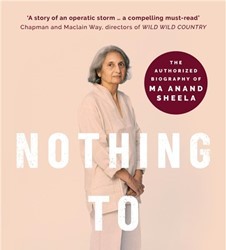
5. Nothing to Lose by Manbeena Sandhu
From heading an ashram at Rajneeshpuram, Oregon, USA, in the 1980s to allegedly spearheading what is known as the largest bioterror attack in American history and spending thirty-nine months in prison, Ma Anand Sheela’s life is one that fascinates and intrigues.
But who is the woman beyond the persona of the commune leader? What is Sheela like behind the sensational ‘tough titties’ avatar?
Manbeena Sandhu followed the Osho movement for two decades before her journey finally led her to Sheela. Nothing to Lose is a no-holds-barred account of Sheela’s life, her intense relationship with Bhagwan, and the riveting story of what actually happened behind the closed doors of the cult’s ashram.
Buy Now!
0 notes